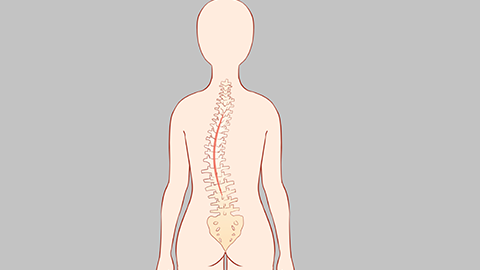What does it mean when the vertebrae on both sides of the spine are at different heights?
Under normal circumstances, the main causes of one side of the vertebrae being higher than the other include long-term poor posture, unilateral muscle tension, scoliosis, vertebral developmental abnormalities, and lumbar muscle strain with compensatory bulging. If discomfort occurs, it is recommended to seek timely medical evaluation and treatment at a正规 hospital. Specific analyses are as follows:
1. Long-term Poor Posture
Prolonged unilateral weight-bearing or slouching leads to imbalanced stress on the spine and uneven muscular pull, resulting in asymmetrical height on either side of the vertebrae. Correct sitting and standing postures, avoid carrying loads on one shoulder, use backpacks with two straps, get up and move every 30 minutes, and perform spinal stretching exercises regularly.

2. Unilateral Muscle Tension
Consistently favoring one side during physical activities causes persistent tightness in muscles on one side of the spine while the opposite side remains relaxed, leading to a height discrepancy between the two sides, often accompanied by localized soreness. Massage the tense muscles, apply heat therapy for relaxation, perform daily symmetrical spinal exercises, and avoid excessive one-sided exertion.
3. Scoliosis
The vertebral column deviates from the midline and curves to one side, causing unequal height on both sides, often associated with uneven shoulders and back pain. Under medical guidance, corrective spinal braces may be worn; medications such as celecoxib capsules, diclofenac sodium sustained-release tablets, or ibuprofen sustained-release capsules can help relieve pain. In severe cases, surgical correction for scoliosis may be required.
4. Vertebral Developmental Abnormalities
Congenital abnormalities in vertebral shape become increasingly apparent during growth and development, usually without significant pain. Avoid excessive spinal loading, strengthen back and core muscle training, and have regular spinal X-rays to monitor progression of any spinal curvature.
5. Lumbar Muscle Strain with Compensatory Bulging
Chronic strain causes congestion and swelling in one side of the lumbar muscles, forming a compensatory bulge that mimics an asymmetry in vertebral height, accompanied by soreness and distension in the lower back. Under medical supervision, medications such as eperisone hydrochloride tablets, Huoxue Zhitong capsules (blood-activating and pain-relieving capsules), or etoricoxib tablets may be used, along with physical therapy. Avoid prolonged sitting or standing; in severe cases, lumbar muscle release surgery may be considered.
In daily life, maintain proper posture and avoid unilateral loading; strengthen symmetrical back and core muscle exercises to enhance spinal stability; choose a mattress with medium firmness to support the spine’s natural curvature; undergo regular spinal check-ups to detect abnormalities early; and seek medical attention promptly if pain develops or asymmetry worsens.




